Who wouldn’t love to grow their own sweet, juicy pineapple at home? What makes this fruit even more fascinating is how easy it is to propagate with just a fresh pineapple and a bit of patience. Unlike many fruits that require seeds, pineapples can be grown from their leafy tops, pups, or slips — making propagation simple and fun, even for beginner gardeners.
In this comprehensive guide, we’ll take you through step-by-step pineapple propagation techniques, covering everything you need to know to turn store-bought pineapples into thriving plants — and eventually, your very own homegrown tropical harvest.
Why Propagate Pineapples?
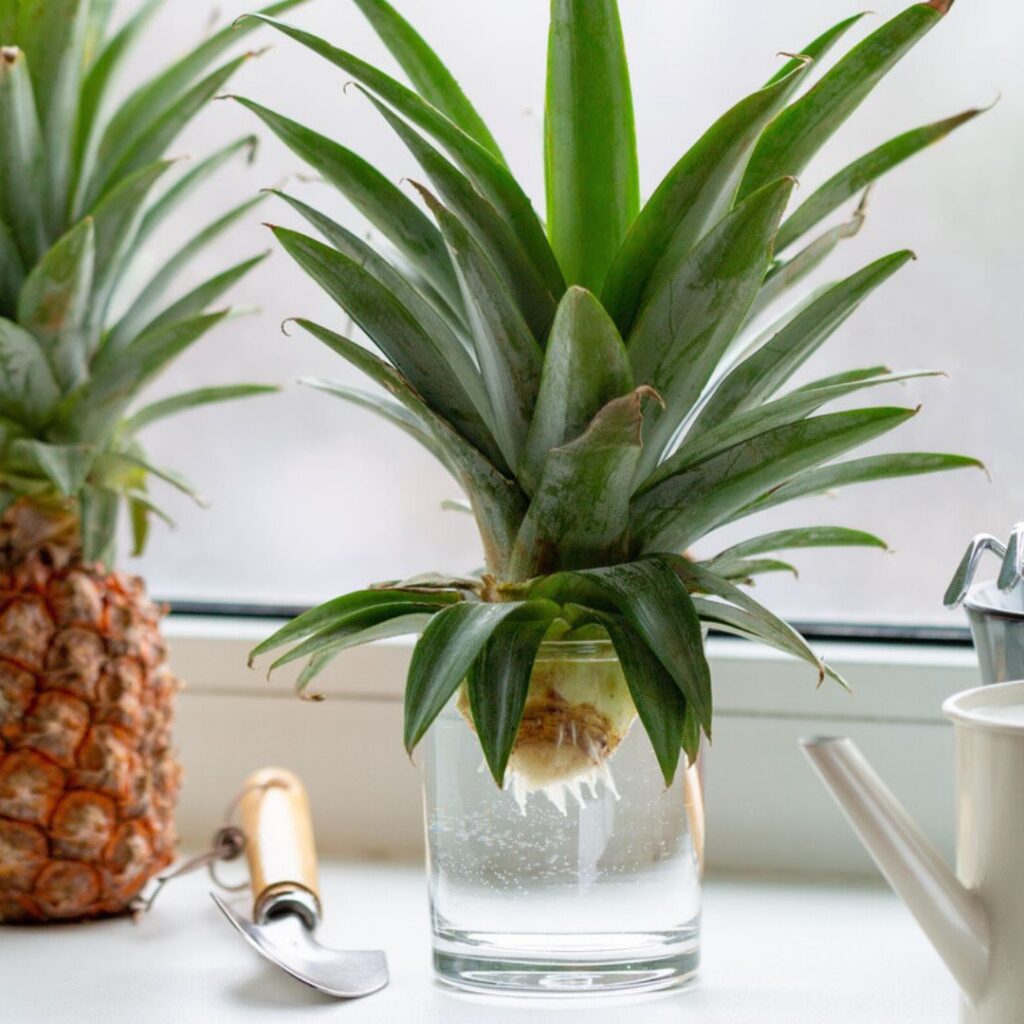
Pineapple propagation isn’t just cost-effective and sustainable — it’s also a fun, hands-on project for home gardeners, families, or anyone looking to grow tropical plants in small spaces.
Benefits of propagating pineapples:
- Reduces kitchen waste by reusing the crown, pups, or slips.
- Easy for beginners with no need for seeds.
- Container-friendly, ideal for balconies, patios, and sunny windows.
- Produces ornamental foliage and tropical fruit with proper care.
Best of all, with the right conditions, a pineapple plant can bear fruit within 18–28 months.
3 Common Methods of Pineapple Propagation
There are three primary ways to propagate pineapple plants:
- Crown propagation (most popular)
- Pups (suckers) propagation
- Slip propagation
Each method offers reliable results, and you can choose based on availability or preference.
Method 1: Crown Propagation (From the Leafy Top)
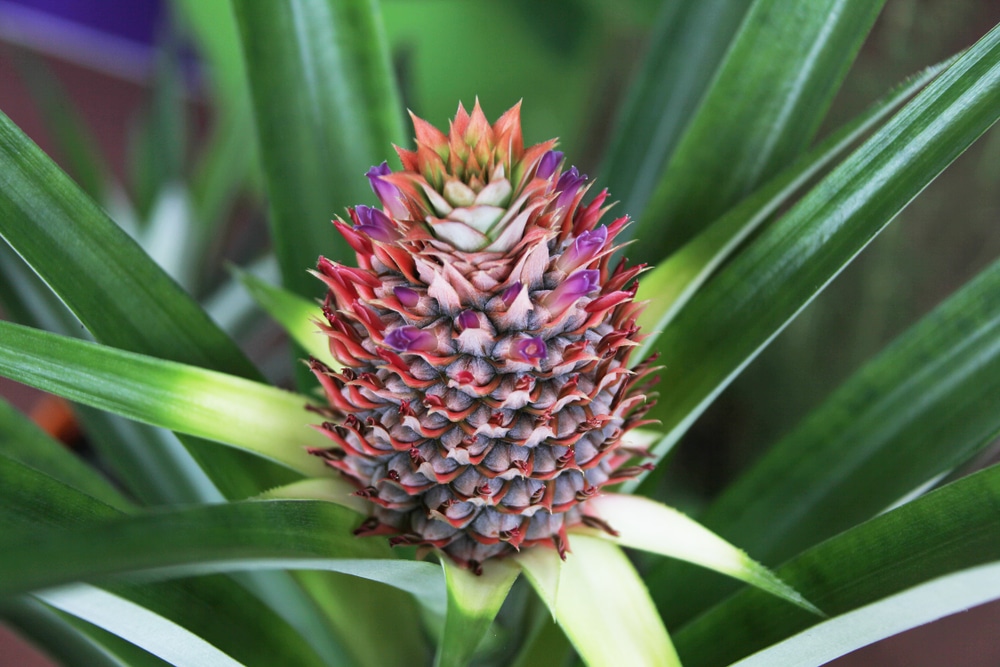
This is the easiest and most accessible method since every store-bought pineapple has a leafy crown.
What You’ll Need:
- A ripe, healthy pineapple with a firm, green crown.
- Sharp knife or hand-twisting method.
- Well-draining potting mix (cactus mix or sandy loam).
- Small pot or container with drainage holes.
Steps:
- Remove the crown:
Firmly grasp the leafy top and twist it off the fruit, or cut about an inch below the leaves. - Trim excess flesh:
Slice away any fruit flesh attached to the crown’s base to prevent rot. - Peel lower leaves:
Remove 5–10 of the bottom leaves to expose 1–2 inches of stem. - Dry the crown:
Allow the prepared crown to air dry in a shaded, well-ventilated area for 24–48 hours. This callouses the cut end and helps prevent rotting. - Root in water (optional):
You can place the base in a glass of water, ensuring only the stem is submerged. Change the water every 2–3 days. Roots should appear within 2–3 weeks. - Plant in soil:
Once roots develop (or directly after drying), plant the crown in a small container with sandy, well-draining soil. - Position in sunlight:
Place the pot in a location receiving 6–8 hours of bright, indirect sunlight daily. - Water lightly:
Keep the soil lightly moist but never soggy.
Method 2: Propagation from Pups (Suckers)
Pups or suckers are small side shoots that grow between the main plant and the base of the pineapple fruit.
Steps:
- Identify healthy pups:
Look for 6–12 inch offshoots growing at the base of a mature plant. - Remove the pups:
Gently twist or cut the pups away from the parent plant using a sharp knife. - Dry the pups:
Let them dry for a day to prevent fungal issues. - Plant in soil:
Use a well-draining potting mix in small containers. - Position in a sunny spot:
Like crowns, pups need bright light and warm temperatures. - Water carefully:
Keep the soil moist but not waterlogged.
Fun Fact: Pups mature faster than crowns and may fruit within 12–18 months under good conditions.
Method 3: Propagation from Slips
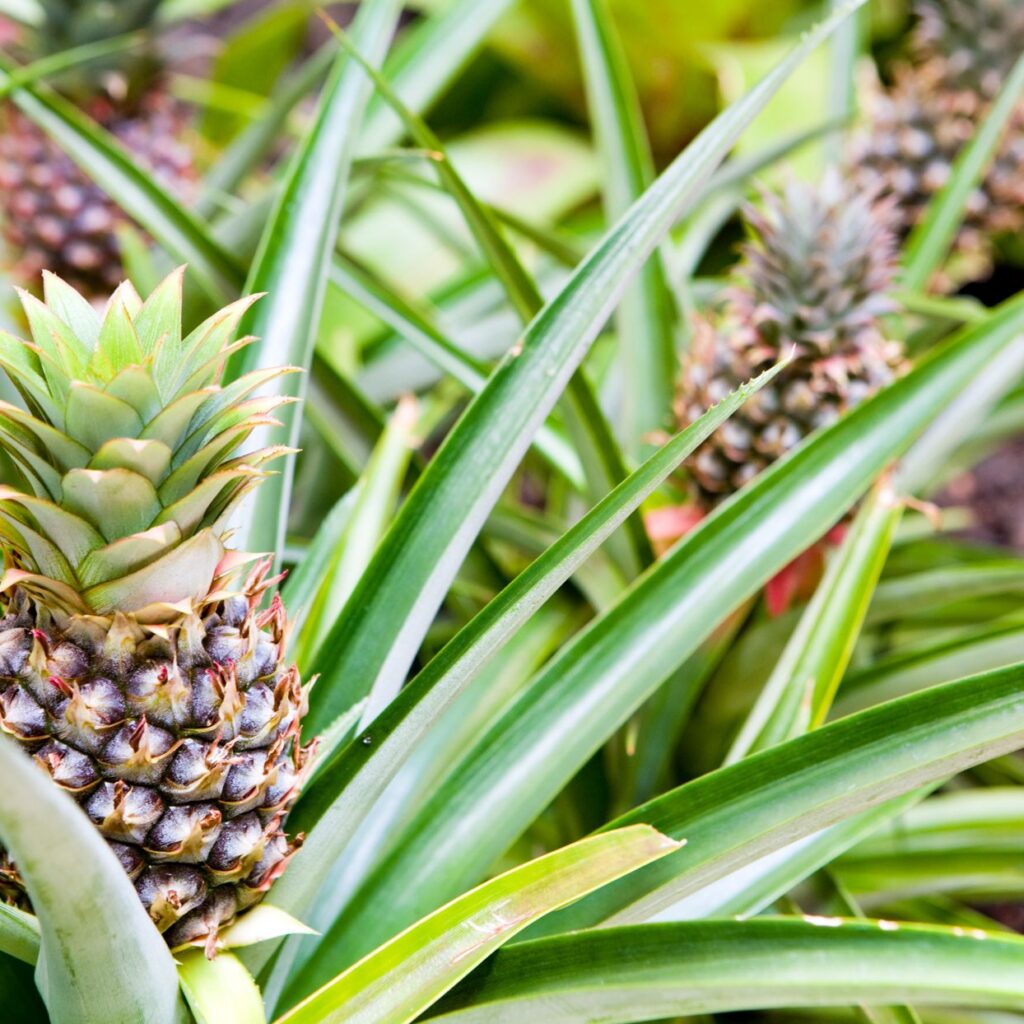
Slips are small shoots that grow out from the base of the pineapple fruit itself.
Steps:
- Harvest slips when 6–8 inches long.
- Remove them by twisting or cutting.
- Allow to dry for a day.
- Plant in sandy, well-draining soil.
- Place in a sunny location and water regularly.
Like pups, slips are a faster route to fruit than crowns.
Ideal Soil and Container Setup
Pineapples thrive in light, sandy, acidic soil (pH 4.5–6.5). In containers, use a cactus or succulent mix, or make your own:
- 1 part potting soil
- 1 part coarse sand or perlite
- 1 part compost or peat moss
Choose pots with ample drainage holes to prevent water accumulation.
Light, Water, and Temperature Requirements
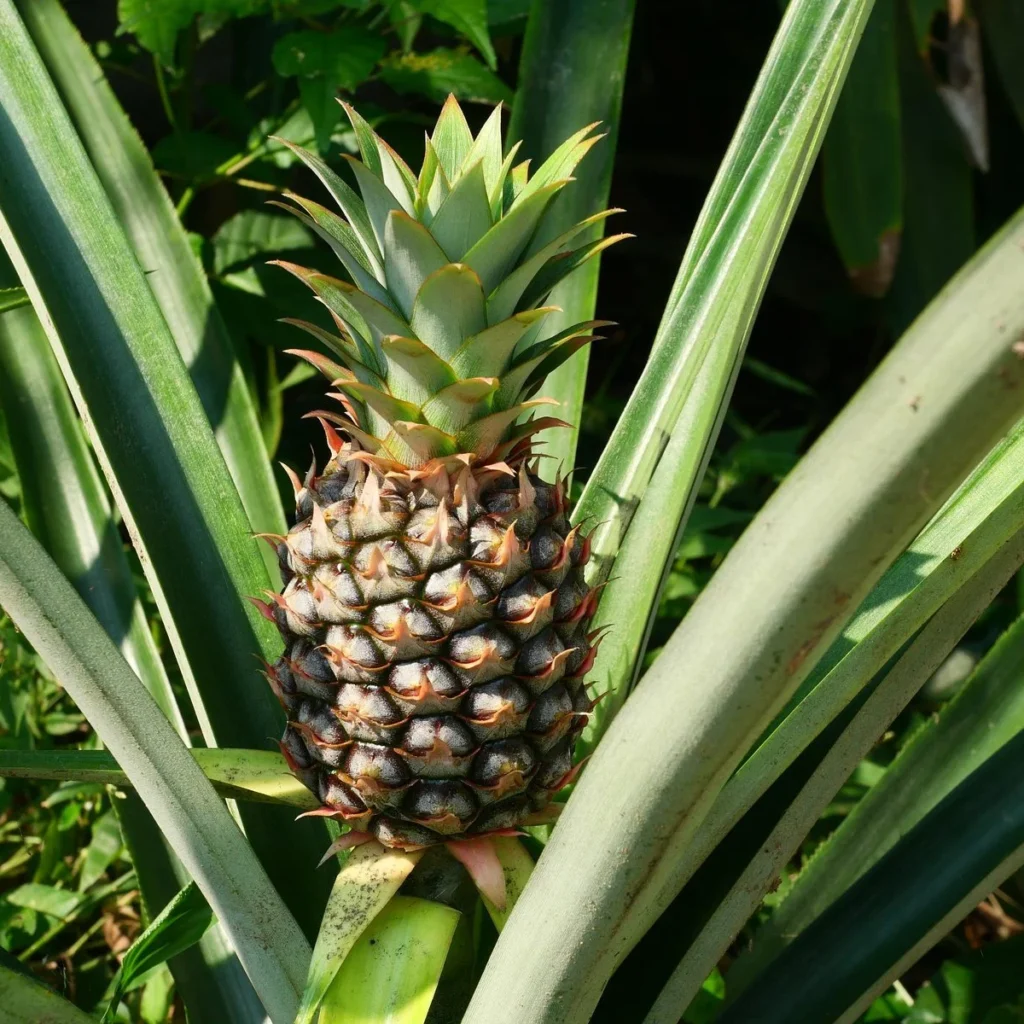
Light:
Pineapples need 6–8 hours of bright sunlight daily. Indoors, place near a south or west-facing window or use grow lights.
Temperature:
Maintain 70–85°F (21–29°C). Avoid exposure below 50°F (10°C).
Water:
Water when the top 1–2 inches of soil feel dry. Pour water into both the soil and central leaf rosette. Reduce watering in winter.
Fertilizing Tips for Propagated Pineapple Plants
Feed plants with a balanced liquid fertilizer (10-10-10) every 6–8 weeks during active growth. Pour diluted fertilizer directly into the soil and the leaf cup.
Stop fertilizing in cold months when plant growth slows.
How Long Does It Take to Grow a Pineapple?
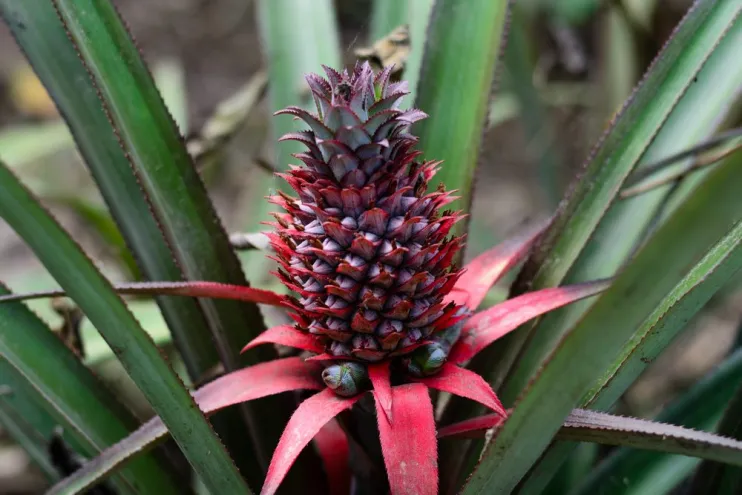
Propagation is rewarding, though slow. Here’s a typical timeline:
- 0–3 months: Rooting and new leaf growth.
- 3–12 months: Rapid leaf development.
- 12–24 months: Plant reaches maturity.
- 18–28 months: Flower stalk emerges.
- 22–30 months: Pineapple fruit ripens.
How to Trigger Flowering in Pineapples
If your plant hasn’t flowered by 2 years:
- Place a ripe apple in a plastic bag with the plant for 7–10 days. The ethylene gas encourages flowering.
Once the flower appears, fruit develops over 4–6 months.
Harvesting and Propagating Again
Harvest when:
- The fruit turns golden yellow.
- A sweet aroma develops.
- The central leaf pulls out easily.
After harvesting:
- Remove new pups or slips to propagate.
- A single mother plant typically produces one fruit but multiple pups for future plants.
Common Issues and Solutions
Yellowing leaves:
Overwatering or poor drainage. Improve drainage and reduce watering.
Slow growth:
Insufficient light or cold temperatures. Move to a sunnier, warmer spot.
No flowering:
Trigger flowering using the apple ethylene method.
Final Thoughts
Pineapple propagation is one of the most rewarding, beginner-friendly projects for gardeners of all skill levels. Whether you’re using a store-bought crown, pups from a mature plant, or slips from a harvested fruit, with the right care you’ll eventually enjoy the tropical joy of homegrown pineapples.
Best of all, the propagation process turns a humble kitchen scrap into a beautiful, exotic plant that doubles as a conversation piece and a source of delicious fruit.

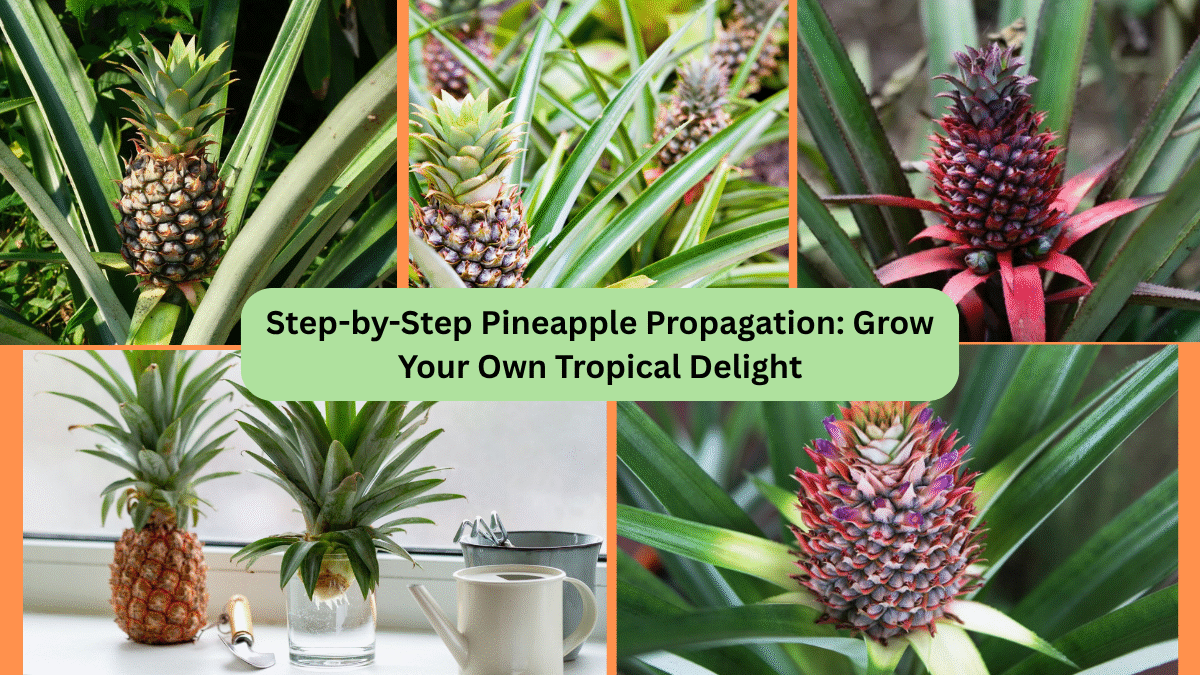




Leave A Comment